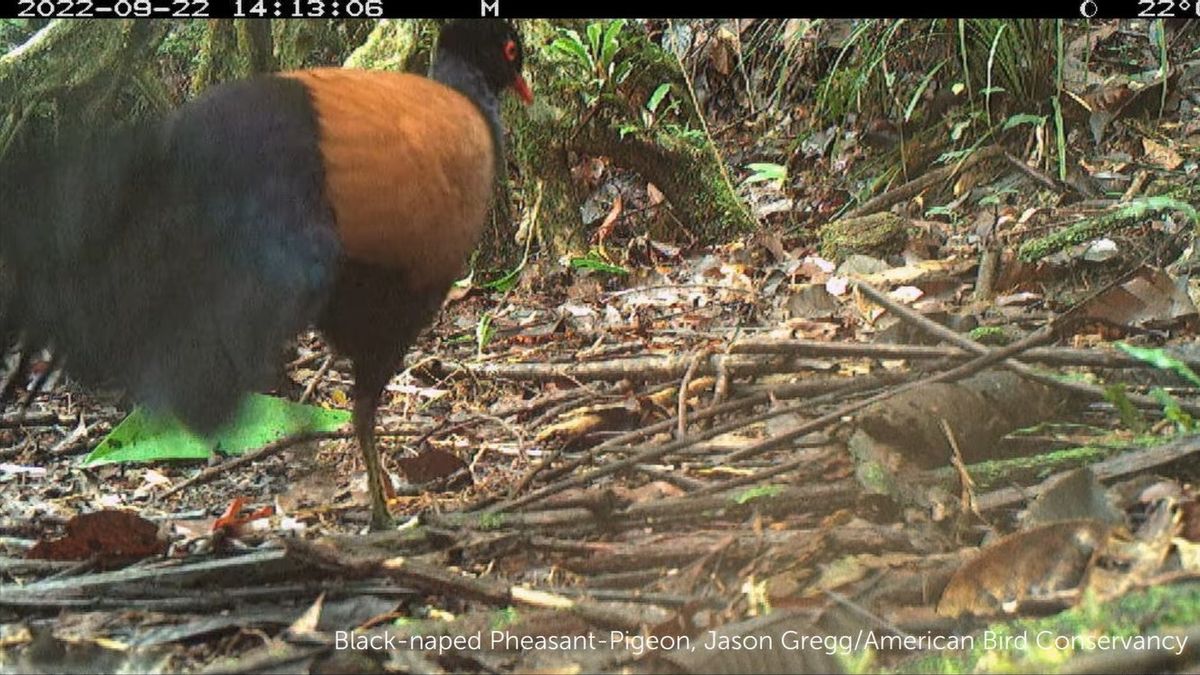JAKARTA - Long time no see and is thought to be extinct, a rare bird is again visible in the forests of Papua New Guinea, caught on camera by a team of scientists and conservationists.
The bird in question is the difficult Black-headed Merpati or Black-naped Pheasant-Pigeon, a large dove living on land that only lives on land onlosson Island, a steep island in the D'Entrecasteaux Islands, off the east coast of Papua New Guinea.
Like any other pheasant-pigeon, Black-naped Pheasant-Pigeon has a laterally compressed tail, which, along with its size, makes it very similar to the pheasant. Lastly documented in 1882 as researchers describe it, the bird has been observed several times over the years by local hunters.
The newly taken photos and videos are the first time since then. The research team photographed a dove with a remote camera trap at the end of a month-long search in
Bird experts know very little about the species, but believe that the population in badson is very small and declining.
"When we collect camera traps, I estimate there is less than one percent chance to get photos of Pheasant-Pigeon Black-naped," Jordan Boersma, a postdoctoral researcher at Cornell University and one of the expedition team's leaders, told the American Bird Conservancy (ABC) November 25.
"Then when I was looking at the photos, I was stunned by this bird's photo walking through our camera," he continued.
"After a month of searching, seeing the first pictures of the pigeons felt like finding a unicorn (horse)," added John C. Mittermeier, director of the Lost Bird Program at ABC and one of the expedition's leaders.
"This is a moment you dream of all your life as a conservationist and bird observer."
The expedition team, which consists of local Papua New Guinea residents working with the National Museum of Papua New Guinea, the Laboratory of the Cornell Ornitology and ABC, arrived at▁tenagason in early September 2022.
They spent a month traveling the island, interviewing locals to identify the location of the trap camera installation, in the hope of finding a pigeon.
The steep mountain terrain onLAND oftenson made the bird's search very challenging.
"Only after we reached the villages on the western slopes of Mount Kilkerran, we began to meet the hunters who had seen and heard the pigeons," said Jason Gregg, conservation biologist and one of the expedition team's leaders.
"We are increasingly confident with the local name of the bird, namely 'Auwo' and feel closer to the core habitat where the Black Pheasant-Merpati Bird lives," he said.
It is known, the expedition was the first camera trap study carried out attenuation Island. The team placed 12 camera traps on the slopes of Mount Kilkerran, the highest mountain on fire and installed eight additional cameras, at a location where local hunters have reported seeing pigeons in the past.
A local hunter named Augustin Gregory in Duda Ununa Village, west of Mount Kilkerran provides breakthrough clues as to where to find the bird.
Gregory reported seeing pigeons several times in areas with steep mountains and valleys and explaining hearing the distinctive sound of the birds.
Following Gregory's suggestion, the team installed cameras in dense forest areas. A camera was placed on the back of the hill at an altitude of 3,200 feet (1,000 meters), near the Kwama River above the Ununa Duda finally caught Pheasant-Pigeon Black-naped which was walking on the forest's 'plane', two days before the team was scheduled to leave the island.
"Finally we found the Pheasant-Pigeon Black-naped, it happened at the last hour of the expedition," said Doka Nason, a team member who installed a camera trap that finally photographed the missing bird.
"When I saw those photos, I was very excited," he continued.
A two-week survey in 2019 by Boermsa, Gregg, and Nason found no traces of the bird, despite gathering reports from local hunters, helped determine the location of the team's search in 2022.
Team findings show the pigeon is likely very rare. The forest is steep and inaccessible where they rediscovered the species could be the last fort of the species on the island.
"The fact that many people we interviewed have never seen or heard of pheasant-pigeon birds really highlights how difficult it is to catch these birds and shows that they can be very sensitive to human disturbances," said Cosmo Le Breton, who supports the team on the pitch as research assistant from the University of Oxford.
The English, Chinese, Japanese, Arabic, and French versions are automatically generated by the AI. So there may still be inaccuracies in translating, please always see Indonesian as our main language. (system supported by DigitalSiber.id)













